W3 Company - Mortars and Assault Pioneer Sections |
|
|
mortar section with 2RAR assault pioneer section photo gallery index index of service stories |
|
Mortar
Section with 6RAR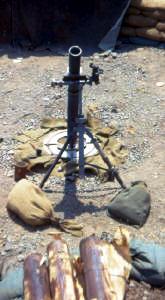
|
|
| back:
LCpl Young
Cpl Butler Sgt O’Brien Cpl Binning front: Pte Cameron Pte Mihinui LCpl Condon Pte Cherry Pte Lewis Pte Flintoft |
hybrid weapon in SVN, US 81mm barrel and bipod, UK base plate and sight, two mortars per section. brown tubes are 81mm bombs. |
The section appointments for the initial deployment in Vietnam were:
Later Joe Mihinui swapped with Pte Ralph 3Pl, Bruce Young swapped with Vince Butler as MFC 2Pl, Pte Rich was posted from Coy HQ as radio operator but RTNZ in May 1970, replaced by Pte Marsh. section call sign on the ANZAC battalion radio net was 85 [8 = mortars 5 = 5th rifle coy] Advance Party. On 29 October 1969, the W3 advance party, including Cpl Binning, arrived in Nui Dat. Cpl Binning's role was to organise the hand over from Cpl Sonny Lakatani’s W2 mortar section. The main body of the W3 section arrived with the full W3 deployment on 14 November 1969. At Nui Dat the section came under command of Support Company 6RAR/NZ ANZAC Battalion. They moved into the mortar platoon compound in the Support Company lines and were allocated two tents and two mortar pits. One section of the mortar platoon was in residence most of the time to act as close fire support for the 1ATF base perimeter and TAOR [base local defence] patrols. Support Company was commanded by an Australian and had a New Zealander, Captain George Kereama RNZIR, as 2IC. The Mortar Officer was Captain JE Horan and the compound was very efficiently run by Sgt Stu Smerdon (both 6RAR) an ex British Army NCO now serving with the Australians. Both Horan and Smerdon were good sorts and quickly made the section feel part of the platoon. Initially, time was spent training on the new equipment – the mortar bi-pods and base plates were American and the training in Malaysia was with British components which were quite different. At the time a couple of the Australian sections were in the compound and the section worked alongside them, doing nightly H and I missions and manning the CP. The Australians were mainly conscripts, with the NCO’s being in the main regular force soldiers. All seemed good sorts and they accepted the new Kiwi section into the platoon.
|
|
Operations ROSS and MARSDEN. After a short settling in period in Nui Dat W3
and W3 mortar section were
deployed to Fire Support Base (FSPB) Discovery (Op Ross).
Initially the section worked alongside Cpl Bob Passey’s V4 mortar section and
were among friends during this settling in period. The section found that its methods of operation would be quite different from the training they had received in New
Zealand and Malaysia. Now was the time to use the mortars in a proper combat role. At first the crews struggled
with the American bi-pods as they were more cumbersome than the lightweight British ones. The crews seemed to be trying too hard and could not settle into the usual relaxed and
efficient work mode until during one nightly firing Ross
Stu
Cameron, Bruce Young and Dave Condon From FSPB Discovery the section then deployed with the main body of 6RAR on 1 December 1969 for Op Marsden. The main body of 6RAR was deployed directly from FSPB Discovery in a long armoured column while covered from a temporary FSPB [Lion] and occupied the new location by last light. W3 Company were air lifted to the new location the same day and patrolled toward the Song Rai river. The W3 mortar section set up a dismounted position while another mortar section were based in AMC across the LZ. Heavy equipment and artillery were deployed by various helicopter types (Skycrane, Chinook and Iroquois). FSPB Picton was our first experience of settling up a position within a FSPB, at FSPB Discovery we had occupied positions established by another section. Digging the mortar positions, CP and living bunkers was assisted by engineer backhoes and bulldozers landed by Chinook helicopters which made light work of the extensive positions established. For the duration of this operation, the section and one Australian mortar section remained at FSPB Picton, supporting battalion operations in the area and providing logistical support for a 3rd mortar section located at FSPB Castle on top of the Nui May Tao mountain. It was on the Nui May Tao that the companies of the Battalion moved into a VC complex of logistic and supply areas. As a major logistic area for the VC there was much to gain from the operations against the VC on the Nui May Tao’s. In the end the Battalion captured weapons, munitions, ammunition, food, equipment, drugs and medical supplies. The long established major VC K76A hospital was put out of action.
The section spent Christmas on the FSPB and were extracted by helicopter with the remainder of the battalion on 28 December for a belated Christmas celebration. Mark Binning recalls the lonely wait for extraction with the final few members of the battalion as dusk closed in. Finally, the last helicopter flight arrived, dropped off a SAS patrol and lifted them out. |
|
|
|
|
|
In
early January the section had their
first experience operating out of armoured mortar carriers
(AMC125). A smaller operation using the Australian 3
Cavalry APC’s took the section east to the coast then south east
along the coast before heading north back to NUI DAT. While a new experience then, APC
operations would be repeated many more times during the tour.
The Section would continue to operate independently from W3 Company. It did join the Company on three
occasions – for the company stint at the Horseshoe, for operations with 2 Platoon on Long Son Island during the
Operation Matilda 15 – 26 January 1970. An operation conducted by the Australian 1 Armoured and 3Cav Regiments with B Company 6RAR and two mortar sections also deployed. W3 mortar section was the only NZ unit to be deployed on the largest Australian armoured operation since WW2 and the first operation of its kind undertaken by the Australian Army in the Republic of Vietnam.
M125 armoured mortar carriers - the red dust was a distinctive feature of any operation in Vietnam
The Operation swept through the area in Binh Tuy Province from the coast near Ham Tan to the May Tao Mountains well inland, then between Nui May Tao and Nui Be, and finally by road to Nui Dat. Any enemy in the area were pushed into 5RAR who were sweeping down from the NE, and any fortifications and/or gardens found in the AO were destroyed. The total distance covered was about 150 miles. The operation, although not a great success as far as number of kills and contacts were concerned, did succeed in driving large numbers of enemy into the path of 5RAR who engaged the enemy and accredit themselves with several kills. The timeline for mortar section activities in January 1970 is here.
from left: Young (doing the driving) Flintoft
|
|
The Horseshoe. After Operation
Matilda the section returned to Nui Dat for a few days before deploying with W3 company to the
Horseshoe. The Horseshoe was a volcanic feature to the south east of Nui Dat.
It is here
mortar section in parallel with CP
between, Ops with 3Cav. While
W3's operations from the Horseshoe lasted for two months, the Mortar Section was called away after about
four weeks for
operations with 3Cav. The first of these comprising one section of APC's (3 carriers) our 2 Mortar AMC's
and a section
of Assault Pion
armoured mortar carrier AMC M125. The 81mm mortar barrel can be seen through
the open door and protruding Within a day or two the Section was back on operations with 3Cav, to the north but short of the Courtenay Rubber, checking on abandoned villages before returning to operations again within the Rubber plantation. Units of the US Army Big Red 1 Division were in contact with NVA or Viet Cong to the South. Doug Lewis on sentry in the jungle covering in that direction spotted one NVA/Viet Cong approaching and was waiting for a good shot at him when his companion, an APC driver with 2 days in country, looked up saw the VC and panicked. Both arrived back at the APC's in a hurry, Doug frustrated at his lost kill. A hovering US Army Cobra Gunship was called in to work over the area and after he made a number of runs the Mortar Section fanned out to see if the VC had been caught by the rocket and machine gun fire. However before we had progressed too far the Cobra, despite having been told to hold fire, lined up for another run and only fast reactions saved the section from being on the receiving end of a friendly rocket volley. That evening we moved down to join the Americans. The US soldiers were young and jittery and littered the area with rubbish and after spending the night with them we were happy to be on our way back to the Courtenay Rubber with our 3Cav friends.
ANZAC Day Parade. We finished our time with
3Cav just prior to ANZAC Day 25 April, joining the Battalion for their final combined parade on 25 April. The
Section then rejoined W3 Coy HQ and 2Pl on Long Son Island during the changeover of 6RAR for 2RAR.
|
|
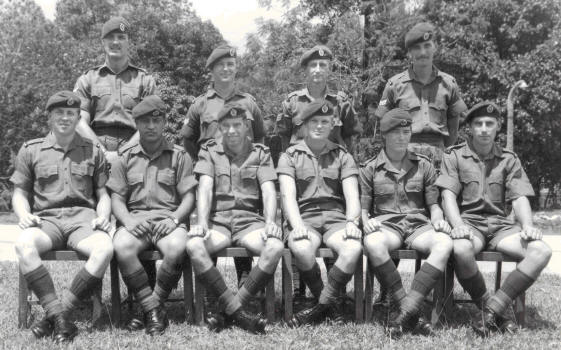
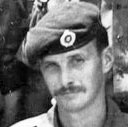 Mark Binning
Mark Binning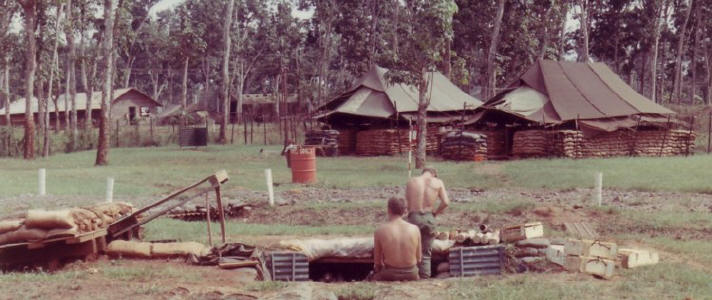

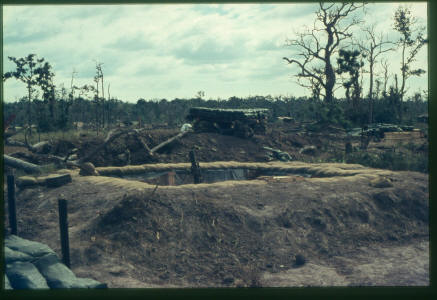
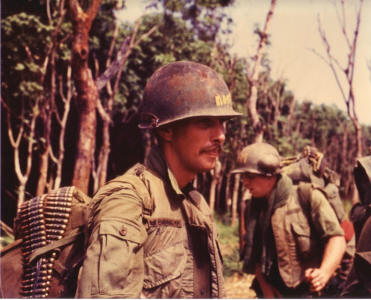
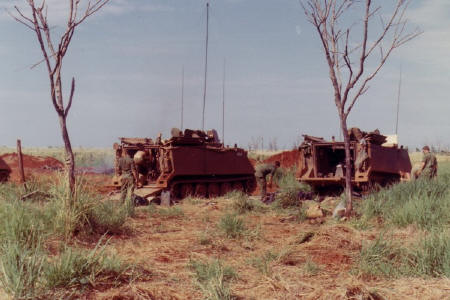
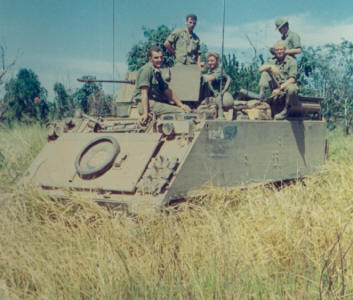


![the armoured mortar carrier was known as AMC M125. The 81mm mortar barrel can be seen through the open door & protruding above the open hatch. Dave Condon in hatch, the M60 machine gun was 'liberated' by Stu Cameron [Lewis]](images/m125_small.jpg) eers was to the Courtenay Rubber in the north of the province looking for NVA moving on supply routes to
their units in the mountain areas. This type of operation suited the section, being free from the constraints of fire bases
and always on
the move with typical small unit freedom to cover ground and strike quickly. In the village of Cam My the Section
enjoyed local 'Bah Me Bah' beer in a tavern under the gaze of a photo of Ho Chi Min who had many glasses raised in toast to
him before the whole unit retired to the plantation to sleep off the effects. During this operation the APC's caught
NVA in the rubber and the fire fight and pursuit involved some interesting manoeuvres by both sides [
eers was to the Courtenay Rubber in the north of the province looking for NVA moving on supply routes to
their units in the mountain areas. This type of operation suited the section, being free from the constraints of fire bases
and always on
the move with typical small unit freedom to cover ground and strike quickly. In the village of Cam My the Section
enjoyed local 'Bah Me Bah' beer in a tavern under the gaze of a photo of Ho Chi Min who had many glasses raised in toast to
him before the whole unit retired to the plantation to sleep off the effects. During this operation the APC's caught
NVA in the rubber and the fire fight and pursuit involved some interesting manoeuvres by both sides [